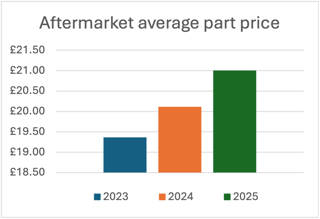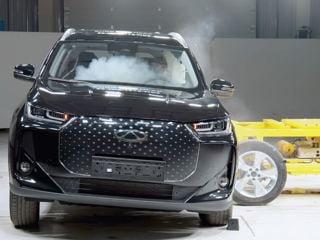Drivers may be able to subscribe to a ‘cloud’ of driverless cars within the next decade.
With Google claiming its self-driving cars are only three-five years from market, fleet management company LeasePlan is predicting huge shifts in the way drivers use their vehicles.
The prospect of ‘platoons’ of connected vehicles following a professional driver in a lead vehicle on motorways is also another prediction contained in its new white paper, called 'The Future of Mobility', which explores the ways personal mobility will change between now and 2023.
These changes, amongst others, will have a profound impact on drivers’ interaction with their vehicles and could allow many to concentrate on other important tasks whilst being transported.
The report, which consulted a wide range of sources, outlines five key trends that will influence the development of the mobility landscape in the coming decade:
1. Environmental regulation: Electric vehicles are likely to become a more credible alternative to traditional fuel types in the coming years, as more stringent environmental regulations come into force. The report says that the uptake of these vehicles will accelerate exponentially if “disruptive” battery concepts that increase capacity and speed of recharging can be brought to market as a matter of urgency.
However, it raises concerns about the source of power for these vehicles, particularly as the UK’s energy production surplus is expected to drop substantially when a number of coal-fired power stations shut in 2015. Against this backdrop, there is the potential for alternative fuels, such as biofuels, to gain a larger share of the automotive market.
2. Cost considerations: The extra costs associated with environmental levies will encourage drivers to choose more efficient cars to offset these expected outgoings. Careful advice on vehicle selection from leasing providers will remain essential as businesses strive to keep their employees efficient, mobile and suitably equipped for their jobs.
3. In-car technology and connectivity: Vehicles will be able to interface more effectively with drivers’ personal devices, meaning the experience of personal car ownership is likely to change dramatically. For example, many in-car entertainment systems are expected to “plug in” to a driver’s smartphone.
This car connectivity will also extend to other vehicles, allowing motorway “convoys” to be created to ease congestion and increase safety. It also raises the possibility of cars operating independently from their owners, offering users the ability to tap into a ‘cloud’ of self-delivering vehicles at any time.
4. New markets: Major manufacturers will increasingly focus their attentions toward BRIC (Brazil, Russia, India, China) economies as spending power continues to increase. With many of these potential consumers joining a growing middle class and living in a new breed of “megacity”, global car design will be influenced by the needs of these markets.
5. Changing vehicle manufacturing processes: Innovations in manufacturing will lead to a higher degree of vehicle personalisation, as niche models will no longer be prohibitively expensive to produce. This could lead to “mobility packages”, where drivers can swap between specialist vehicles depending on job or their personal leisure needs.
Matt Dyer, commercial director, LeasePlan UK, said: “The Future of Mobility white paper suggests that we are about to enter a new era of personal mobility. Organisations must be prepared to react quickly to the impact that this will have on their employees and wider business operations. Mobility needs to be thought about in more holistic terms and leasing companies remain in pole position to advise employers about the best solution for their business.
“While we can expect an aesthetic change to the vehicles we drive, due to increasing BRIC country influence and new manufacturing techniques, many of the differences in the field of personal mobility will be less visible. We will watch with interest to gauge the accuracy of our predictions, but it is important to always be thinking ahead to ensure any swift sector changes don’t come as a surprise.
Download a free copy of the full report.



















Login to comment
Comments
No comments have been made yet.